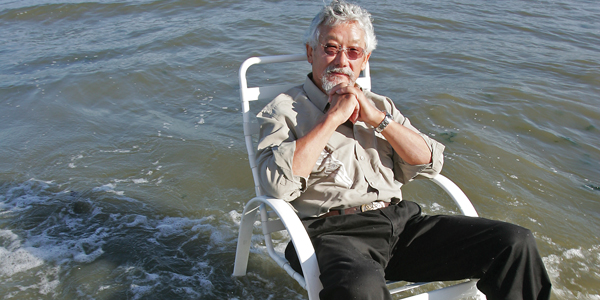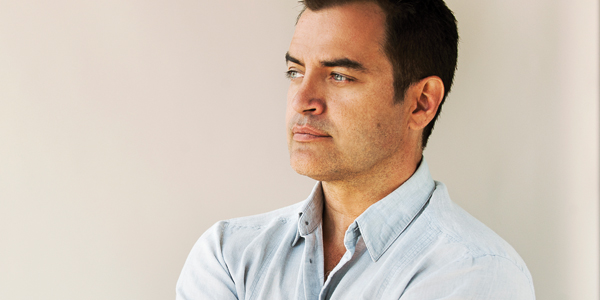 When I was in grad school I was interested in the spread of political behaviours through social networks. A mutual friend introduced me to Nicholas Christakis of Harvard Medical School, who was interested in the spread of health behaviours. When we met, we had an “a-ha” moment realizing that just about everything can spread, and that networks are the stitches that bind us all together.
When I was in grad school I was interested in the spread of political behaviours through social networks. A mutual friend introduced me to Nicholas Christakis of Harvard Medical School, who was interested in the spread of health behaviours. When we met, we had an “a-ha” moment realizing that just about everything can spread, and that networks are the stitches that bind us all together.
Our first two papers were on serious health problems – obesity and smoking – so for our third paper we were interested in looking for solutions. We wanted to learn how positive feelings and behaviours spread.
And so, we made a bet…
Nicholas wagered that unhappiness would spread more easily than happiness because the emotion is more tied to survival. He based his theory on the idea that if we do something that endangers us and it makes us unhappy, we’re less likely to do it again. Makes sense. But, I put my money on the theory that happiness would spread more easily because the function of happiness might be tied to human co-operation. –If we can share a laugh or a smile, we might forget about ourselves for a moment and do what’s best for the group.
Turns out, in the battle between happy and unhappy waves that spread through a network, happiness wins. This is great news. It means that happiness spreads more robustly than unhappiness and it even seems to have a greater effect than money.
Scientists have been interested in happiness for a long time. They’ve studied the effect of everything from winning lotteries to losing jobs to getting sick, but they had never before considered the full effect of other people on happiness. We show that happiness can spread from person to person in a chain reaction through social networks.
One of the key determinants of human happiness is the happiness of others. An innovative feature of our work was exploring the idea that emotions are a collective phenomenon, not individual.
We used data from the Framingham Heart Study to recreate a social network of 4,739 people whose happiness was measured from 1983 to 2003. Assessing the participants’ emotional wellbeing, we relied on answers to four items from the Centre for Epidemiological Studies Scale: “I felt hopeful about the future”; “I was happy”; “I enjoyed life”; and “I felt that I was just as good as other people.”
Research indicated happiness loves company. Happy people tend to cluster together, and, on the surface, people with more social contacts are happier. We observed it’s not just the total number of connections, but the number of happy ones.
Our study, published in the British Medical Journal, shows that happiness spreads through a social network – traveling not just the well-known path from person to person but even to people up to three degrees removed. You are 15 percent more likely to be happy if directly connected to a happy person; 10 percent if it’s the friend of a friend who is happy; and six percent if it’s the friend of a friend of a friend. On average, every happy friend increases your own chance of being happy by nine percent. Each unhappy friend decreases it by seven percent.
Unhappiness also spreads, but not nearly as much.
The effects we observe may not seem significant at first, but consider that $5,000 extra dollars, in 1984, was associated with just a two percent increase in happiness and you see the power of other people is incredible. Someone you’ve never met – the friend of a friend of a friend – can have a greater influence than hundreds of dollars in your pocket.
How connections are structured, matters as well. Remarkably, where we are situated in the social network has a big impact on our happiness. According to our study, individuals’ happiness depends not only on how many friends they have but also on how many friends their friends have. In social-network terms, this is known as “centrality,” and the more central a person is – the better connected their friends or the wider the social circle – the more likely they are to become happy. (The effect does not work the other way around: Becoming happy doesn’t widen a social circle.)
We also looked at what happens to happiness with distance. When a friend who lives within a mile becomes happy, it increases the probability a person is happy by 25 percent. More distant friends have no significant effect. Similar effects are seen in siblings who live within a mile and in spouses who live together versus distant siblings and separate living spouses. Next-door neighbours have a significant effect, 34 percent, while neighbors further away, even on the same block, do not.
We think the spread of emotion has a fundamental psycho-biological aspect. Close physical interaction is necessary, so the effect decays with distance. The effect also decays with time.
There are several practical implications to the work, not least of which might be to take greater responsibility for your own happiness because it affects dozens of others. The pursuit of happiness is not a solitary goal. We are connected, and so is our joy.





